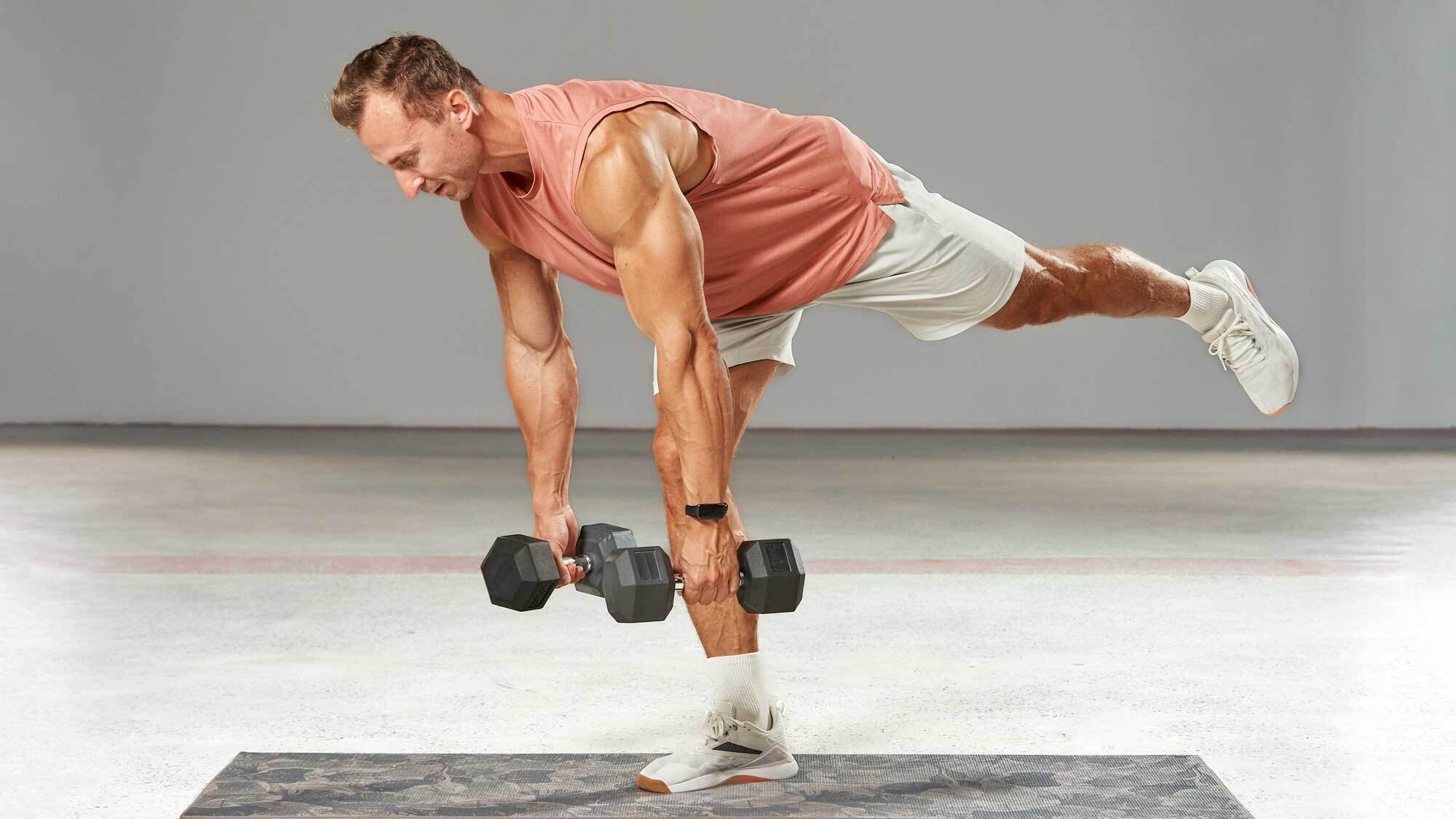3 things runners should always include in their strength training — according to a physiotherapist
Add these key workout ingredients if you're a runner

Strength training should be an integral part of any keen runner’s workout routine, but the truth is that many fail to make time for it. I can be as guilty of this as any runner, regularly running for seven or eight hours each week yet being unable to find 20 minutes for strength work.
Nevertheless, I’ve been trying to improve on this front. To that end I asked physiotherapist Patrick Carroll for a basic dumbbell workout for runners, which has helped.
As well as being a specialist musculoskeletal physiotherapist, Carroll is the creator of the Running Buddy app, which offers strength training programs for runners. He also shares advice through his Instagram account, where one post caught my eye recently. Carroll listed the three ingredients runners should include in their strength training.
These are an explosive leg exercise, an exercise you do on one leg, and an exercise that focuses on the calf muscles. I love this advice as it boils down the vast amount of information out there for runners into a simple-to-understand recipe for a good workout. To get more detail on how to use these principles in your training, I asked Carroll for more detail on each of the three exercises.
Watch Patrick Carroll’s strength exercises for runners
A post shared by Running Buddy - Patrick Carroll (@runningbuddytraining)
A photo posted by on
The beauty of this advice is that it can be used no matter what equipment you have to train, even though it can be helpful to have access to a gym or a set of the best adjustable dumbbells to add weight to the exercises.
1. Explosive Exercises
“Even though running is an endurance sport there is a requirement to be able to produce force quickly,” says Carroll. “A foot contact when running only lasts about one quarter of a second. This gets even shorter when you pick up the pace.
“With this knowledge it makes sense to challenge your body to produce force in key muscle groups quickly. This is often termed improving 'rate of force development.' Successfully improving this leads to better running economy, which means you spend less energy propelling yourself forward for each stride.”
Get instant access to breaking news, the hottest reviews, great deals and helpful tips.
Some options for explosive leg exercises you can include in your workouts are the low weight high speed repeated countermovement jumps you can see in the video above, or pogo hops.
2. Single Leg Exercises
“With one foot hitting the ground at a time when running it seems obvious that single leg exercises are important.” says Carroll. “It’s common for runners to have differences between sides in strength levels, balance and coordination. These can be hidden during double leg exercises whereas they’re exposed during single leg exercises. Working on legs separately allows both to benefit.
“It’s more difficult to balance when on one leg due to a narrower base of support. This forces the body to use more stabilising muscles. These are important during running, particularly around your pelvis. When stabilizing muscles and bigger force producing muscles are working well together, running can feel less effortful.
“A fascinating phenomenon called the bilateral deficit is another key reason to use single leg exercises. It’s well proven that when you compare how much force can be produced by each leg separately — for example with a single leg squat — it exceeds what can be produced by each leg in a double leg exercise like the squat. Tapping into this can lead to greater overall improvements in strength.”
A couple of options for single-leg moves you can add to your workouts are the single leg hip hinge as demonstrated by Carroll in the video, or step-ups.
3. Calf Exercises
“The calf complex is the biggest contributor to propelling you forward when you run.” says Carroll. “The gastrocnemius and soleus muscles mesh together with the achilles tendon to form a beautiful spring-like system. Improving the strength of the muscles and the stiffness of the tendon can help you run more efficiently.
“This area is also one of the most common sites of injury. By increasing the muscle strength and tendon quality the thinking is that you have more of a buffer before reaching breaking point when trying to run further or faster.”
Two options for calf exercises to include are the off-step Smith machine double leg heel raise in the video above, and the off step bent knee single leg heel raise.
More from Tom's Guide
- Forget the gym — build a stronger chest and arms with this 5-move dumbbell workout
- I tried this 15-minute dumbbell workout — and could barely lift my arms the next day
- I’m a PT — you just need this 3-move biceps workout with dumbbells to sculpt your arms

Nick Harris-Fry is an experienced health and fitness journalist, writing professionally since 2012. He spent nine years working on the Coach magazine and website before moving to the fitness team at Tom’s Guide in 2024. Nick is a keen runner and also the founder of YouTube channel The Run Testers, which specialises in reviewing running shoes, watches, headphones and other gear.
Nick ran his first marathon in 2016 and became obsessed with the sport. He now has PBs of 2hr 25min for the marathon and 15min 30sec for 5K. Nick is also a qualified Run Leader in the UK.
Nick is an established expert in the fitness area and along with writing for many publications, including Live Science, Expert Reviews, Wareable, Coach and Get Sweat Go, he has been quoted on The Guardian and The Independent.
